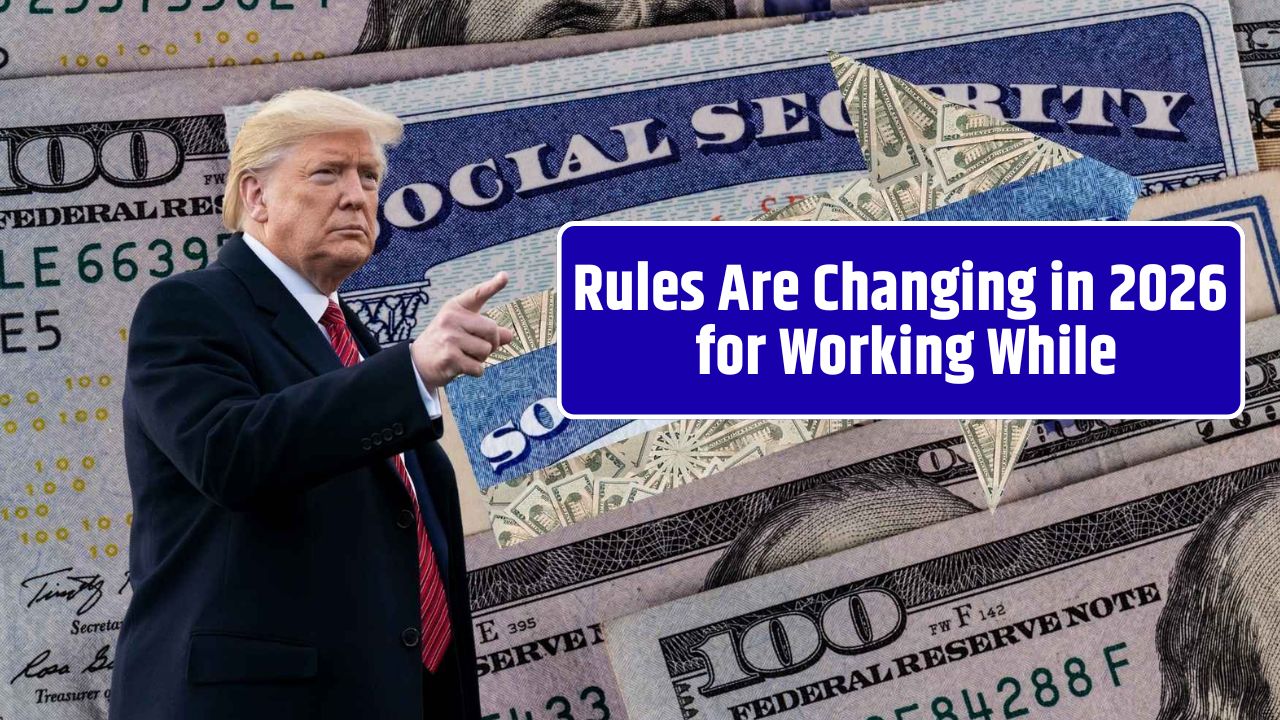If you picture retirement as a golden stretch of leisure — long walks on the beach, tee times instead of timecards — you’re not alone. But for millions of Americans, that postcard version of retirement doesn’t match reality anymore. A growing number of older adults are drawing Social Security benefits while still working, either because they want to stay active or because they simply can’t afford not to.
After years of inflation and rising costs, that monthly check doesn’t stretch as far as it once did. Rent, groceries, and healthcare all keep eating into budgets that used to hold steady. So more retirees are taking jobs, freelancing, or consulting — and bumping up against the Social Security earnings test that can reduce benefits for people who work before reaching full retirement age (FRA).
The twist? Starting in 2026, those limits are getting a small but meaningful bump, giving working retirees a bit more breathing room before Uncle Sam starts trimming their checks.
The Rules as They Stand in 2025
If you’ve already hit your full retirement age, congratulations — you can work as much as you like without losing a penny of your Social Security benefits.
But if you’re below FRA, things get a bit trickier. The earnings test determines how much you can earn before the government starts withholding part of your monthly payments.
| Scenario | 2025 Earnings Limit | Reduction Rule |
|---|---|---|
| You will not reach full retirement age in 2025 | $23,400 | Lose $1 in benefits for every $2 earned above that limit |
| You will reach full retirement age in 2025 | $62,160 (applies only until the month you reach FRA) | Lose $1 in benefits for every $3 earned above that limit |
That might sound like a stiff penalty, but here’s the part many people miss — it’s temporary. Once you reach full retirement age, the Social Security Administration (SSA) recalculates your benefit, crediting you for the months when payments were withheld. Over time, that means your checks increase slightly to make up for what you lost.
Still, in the short run, the withholding can sting. Many retirees discover midyear that they’ve earned just a few hundred dollars “too much,” triggering an unexpected cut in their monthly benefit.
What’s Changing in 2026
The structure of the earnings test isn’t changing — just the income thresholds. The SSA adjusts them annually to reflect national wage growth and inflation, announced each October alongside the Cost-of-Living Adjustment (COLA).
Here’s what analysts are projecting for 2026:
| Scenario | Projected 2026 Limit | Change from 2025 |
|---|---|---|
| Below full retirement age for all of 2026 | $24,360 | +$960 |
| Reaching full retirement age during 2026 | $64,800 | +$2,640 |
That bump means retirees under FRA all year could earn nearly $1,000 more before losing a dollar in benefits, while those reaching FRA in 2026 could earn roughly $2,600 extra.
For part-timers, consultants, or semi-retired professionals, that’s real money — enough to cover a few extra bills or even an annual property tax payment.
How the Withholding Actually Works
The system isn’t quite as simple as “earn too much, lose benefits.” The SSA estimates your total income for the year up front. If you expect to go over the limit, benefits are withheld early — usually by pausing your monthly checks until the amount owed is covered.
If you end up earning less than expected, you’ll get a refund of the over-withheld payments the next year.
Example:
You’re 64 in 2026 and expect to earn $30,000.
- The limit is $24,360, meaning you’re $5,640 over.
- You’ll lose $1 for every $2 over the limit → about $2,820 withheld.
- SSA might withhold your first two benefit checks of the year, then resume normal payments.
Once you hit FRA, your benefits are recalculated upward — essentially paying you back over time.
Why the Earnings Test Exists
Most people assume it’s a penalty for working. It’s not.
The earnings test is designed to balance the system for people who claim benefits early while continuing to earn wages. Social Security benefits are calculated to be “actuarially neutral,” meaning — in theory — whether you claim early or later, your lifetime benefits should be roughly the same.
If you claim early and keep working, you’re effectively double-dipping: getting reduced monthly benefits while earning income. The earnings limit helps even that out until you reach FRA, when the adjustment disappears.
It’s a fairness mechanism, not a tax — though admittedly, it can feel like one.
Planning Ahead for 2026
If you’re planning to work while collecting benefits next year, a little strategy goes a long way.
- Estimate your earnings early. Review pay stubs or planned work hours and use SSA’s Retirement Earnings Test Calculator to see how much you can safely make.
- Report changes right away. If your income outlook changes midyear, update SSA to prevent over-withholding.
- Watch your birthday month. Once you hit your FRA, you can earn as much as you like with zero penalties.
- Consider delaying your claim. Waiting even six months past age 62 can raise your lifetime monthly benefit substantially.
- Check your personalized FRA and benefit estimates using your my Social Security account.
What Full Retirement Age Looks Like Now
Your full retirement age depends on your birth year — the point when you can receive 100% of your earned benefit.
| Birth Year | Full Retirement Age |
|---|---|
| 1954 or earlier | 66 |
| 1955 | 66 and 2 months |
| 1956 | 66 and 4 months |
| 1957 | 66 and 6 months |
| 1958 | 66 and 8 months |
| 1959 | 66 and 10 months |
| 1960 or later | 67 |
For most Americans now nearing retirement, that magic number is 67.
FAQs:
Do I lose my Social Security benefits permanently if I earn too much?
No. Any withheld benefits are credited back once you reach full retirement age through a recalculation.
Is the earnings test the same as paying taxes on Social Security?
No. Taxes on benefits are separate — based on total income, not just wages. The earnings test only affects timing of payments.
What if I’m self-employed or have a small business?
Your net self-employment income counts toward the earnings limit, so track it carefully.














